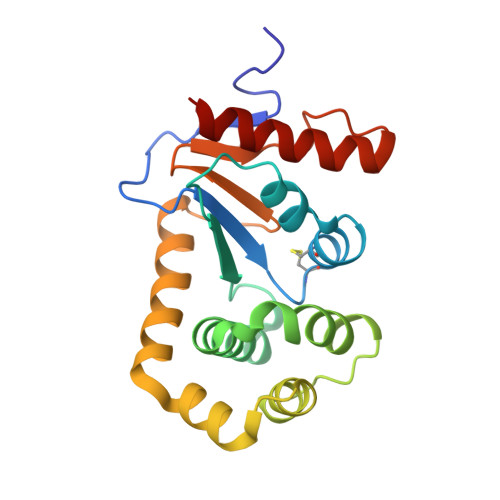Methyl probes in proteins for determining ligand binding mode in weak protein-ligand complexes.
Mohanty, B., Orts, J., Wang, G., Nebl, S., Alwan, W.S., Doak, B.C., Williams, M.L., Heras, B., Mobli, M., Scanlon, M.J.(2022) Sci Rep 12: 11231-11231
- PubMed: 35789157
- DOI: https://doi.org/10.1038/s41598-022-13561-y
- Primary Citation of Related Structures:
7TTV - PubMed Abstract:
Structures of protein-ligand complexes provide critical information for drug design. Most protein-ligand complex structures are determined using X-ray crystallography, but where crystallography is not able to generate a structure for a complex, NMR is often the best alternative. However, the available tools to enable rapid and robust structure determination of protein-ligand complexes by NMR are currently limited. This leads to situations where projects are either discontinued or pursued without structural data, rendering the task more difficult. We previously reported the NMR Molecular Replacement (NMR 2 ) approach that allows the structure of a protein-ligand complex to be determined without requiring the cumbersome task of protein resonance assignment. Herein, we describe the NMR 2 approach to determine the binding pose of a small molecule in a weak protein-ligand complex by collecting sparse protein methyl-to-ligand NOEs from a selectively labeled protein sample and an unlabeled ligand. In the selective labeling scheme all methyl containing residues of the protein are protonated in an otherwise deuterated background. This allows measurement of intermolecular NOEs with greater sensitivity using standard NOESY pulse sequences instead of isotope-filtered NMR experiments. This labelling approach is well suited to the NMR 2 approach and extends its utility to include larger protein-ligand complexes.
Organizational Affiliation:
Medicinal Chemistry, Monash Institute of Pharmaceutical Sciences, Monash University, 381 Royal Parade, Parkville, VIC, 3052, Australia.
















